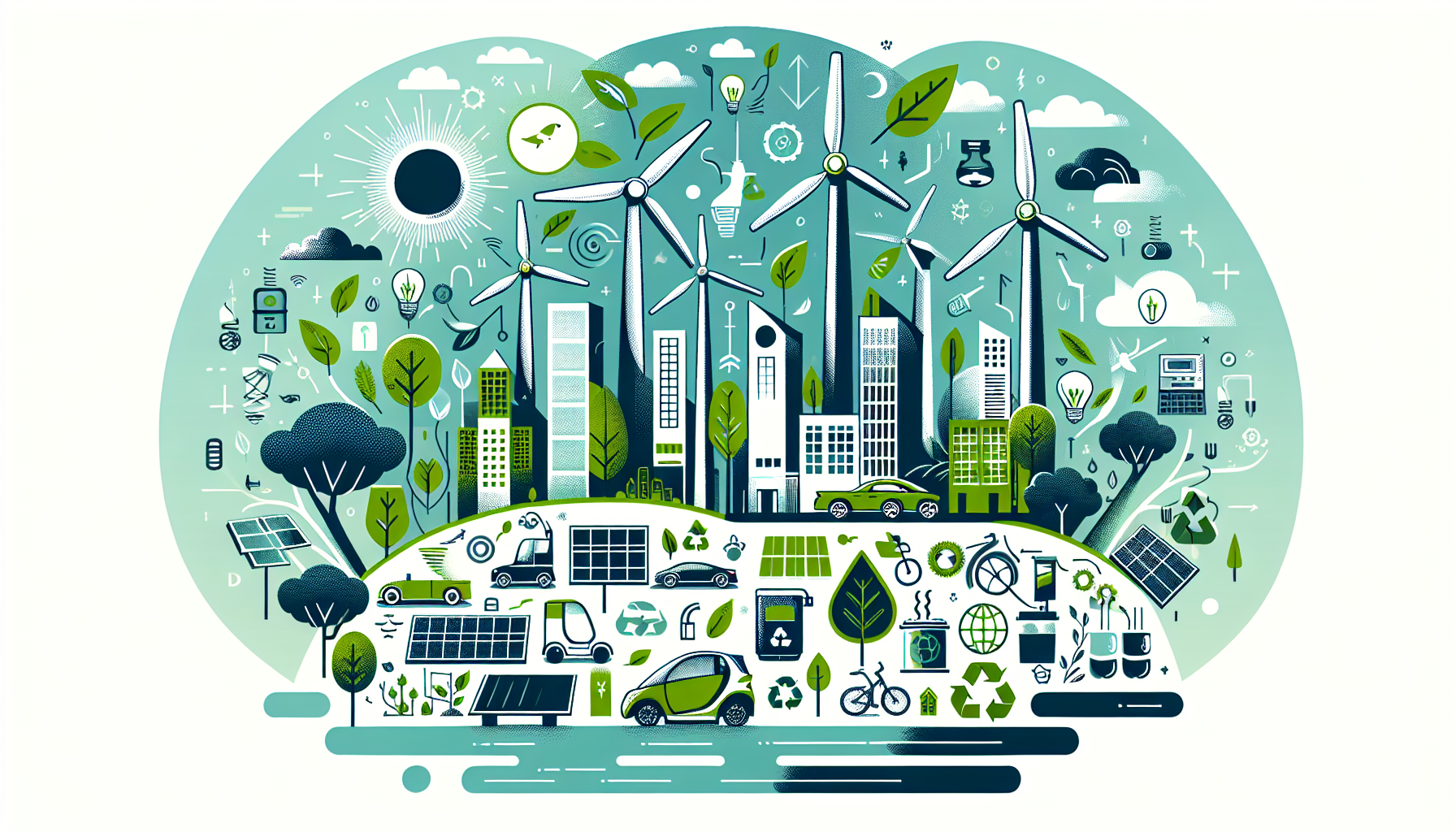1. Solar-Powered Roads
What They Are
Solar-powered roads are an innovative approach to energy generation that integrates photovoltaic technology with traditional road surfaces. These roads utilize solar panels embedded within durable materials designed to withstand heavy traffic. The concept is to create energy-harvesting surfaces that can power streetlights, traffic signals, and even charge electric vehicles.
Benefits
Not only do solar roads generate clean energy, but they can also help reduce reliance on fossil fuels. They serve dual purposes—functioning as a thoroughfare while producing renewable energy. With advancements in durability and efficiency, the technology is evolving rapidly, making it a promising option for sustainable infrastructure.
2. Biodegradable Plastics
The Need for Change
Conventional plastics present a significant environmental threat, taking centuries to decompose and contributing to landfill overflow and ocean pollution. Enter biodegradable plastics, made from renewable sources like corn starch or sugarcane, which break down naturally over time.
Types Available
- PLA (Polylactic Acid): Derived from corn, it’s commonly used in food containers and packaging.
- PHA (Polyhydroxyalkanoates): Produced by bacteria, suitable for a range of applications, including medical uses.
3. Smart Water Bottles
How They Work
Smart water bottles are designed to encourage hydration while reducing plastic consumption. Equipped with sensors and Bluetooth technology, these bottles track water intake and remind users when it’s time to drink more water. They can sync with smartphones for easy tracking.
Environmental Impact
By encouraging the use of reusable bottles, these innovations significantly reduce single-use plastic waste. Users can help minimize their environmental footprint while staying healthy and hydrated.
4. Vertical Farming
Modern Agriculture
Vertical farming refers to the practice of growing crops in vertically stacked layers, often in controlled indoor environments. This method maximizes space in urban settings, enabling the production of fresh produce in locations where traditional farming isn’t feasible.
Advantages
Vertical farms use significantly less water and land than traditional agriculture and can eliminate the need for harmful pesticides. Additionally, by growing food closer to urban centers, it reduces transportation emissions associated with delivering produce.
5. Energy-Generating Kinetics
The Concept
Energy-generating kinetics involve harnessing energy from human movement, such as walking or running. Systems are designed to capture kinetic energy and convert it into electricity, which can be used to power devices or contribute to the grid.
Applications
From energy-harvesting sidewalks to gym equipment that generates power, these innovations demonstrate the potential of converting everyday activities into renewable energy sources. The technology emphasizes sustainable living in an engaging and practical manner.
6. Water Purification Innovations
New Technologies
Recent advancements in water purification include solar-powered purification systems and filters made from sustainable materials. These technologies enhance access to clean drinking water, particularly in developing regions.
Case Study: Solar-Clean Water Project
Some projects combine solar energy and innovative filtration methods to create efficient, cost-effective water purification systems. This approach not only provides clean water but also encourages community involvement and education around sustainable practices.
7. Upcycled Materials
What is Upcycling?
Upcycling refers to the process of repurposing waste materials into new products of higher quality or value. Instead of discarding items, creative minds transform them into unique, functional, and attractive goods.
Examples of Upcycled Products
- Furniture made from reclaimed wood and old pallets.
- Bags and accessories crafted from discarded denim and plastic bottles.
8. Electric and Hydrogen-Powered Vehicles
Shift in Transportation
With the automotive industry leaning towards sustainability, electric and hydrogen-powered vehicles represent an eco-friendly alternative to traditional gasoline-powered cars. These vehicles produce zero emissions and offer a cleaner transportation solution.
Future of Mobility
As battery technology improves and the infrastructure for charging and refueling develops, the adoption of these vehicles will likely increase. Many governments are now offering incentives to consumers to make the shift towards greener options.
9. Sustainable Fashion Innovations
Eco-Friendly Textiles
The fashion industry is notorious for its environmental impact, but sustainable innovations are changing the narrative. Brands are increasingly using eco-friendly materials such as organic cotton, hemp, and recycled plastics to produce clothing.
Accessories with a Purpose
Additionally, companies are creating accessories made from sustainable sources or through upcycled processes. Awareness of the negative environmental effects of fast fashion is spurring positive changes in consumer behavior and corporate responsibility.
10. Hydrogen Fuel Cells
What Are They?
Hydrogen fuel cells convert hydrogen gas into electricity through chemical reactions, emitting only water as a byproduct. This clean energy source is gaining traction in various applications, from powering vehicles to providing electricity for buildings.
Prospects for the Future
As research continues to improve the efficiency of hydrogen production and fuel cells, we could see a significant growth in their implementation, particularly in sectors that require heavy-duty energy, such as logistics and transportation.
